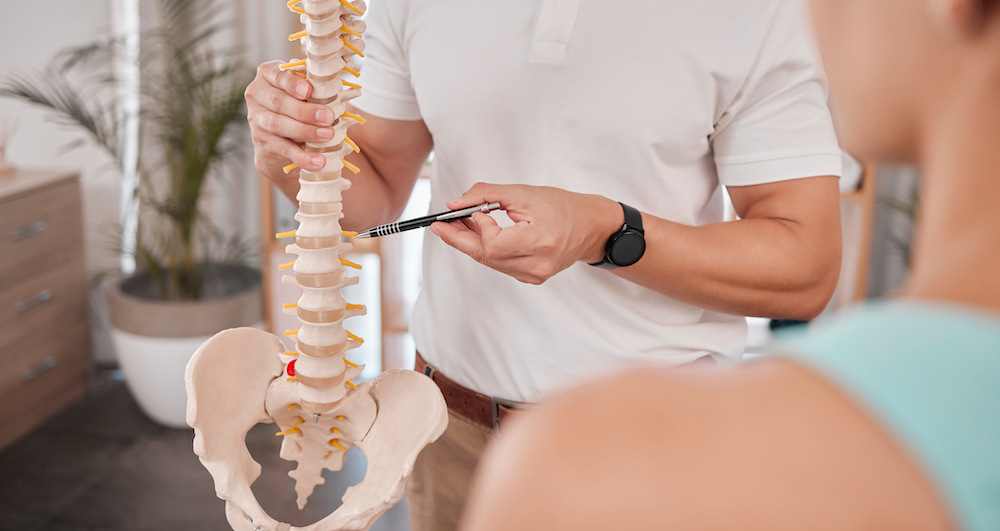
Tackling Tailbone Pain: A Guide to Easing Coccydynia
Persistent tailbone pain, or coccydynia, can be both uncomfortable and disruptive. This condition, which affects the small triangular bone at the base of your spine, also known as the coccyx, can lead to sleep disturbances and a reduced quality of life. In this article, we’ll delve into the causes of coccydynia, its impact on sleep, and discuss how to relieve and manage tailbone pain.
Understanding the Causes of Chronic Tailbone Pain
There are a few underlying causes of coccydynia, which include:
- Trauma or injury: When direct trauma occurs to the tailbone (eg. slip and fall on the buttock), even from minor incidents, it can result in persistent pain.
- Poor posture: Sitting for prolonged periods especially on a hard surface with improper posture can exert excessive pressure on the coccyx. This is especially common among desk workers.
- Pregnancy: Women who have undergone challenging deliveries or during pregnancy may experience coccyx pain due to the pressure and movement of a growing baby.
- Infections or tumours: Although less common, infections or tumours in the tailbone area can lead to excruciating pain around the tailbone area.
The impact of tailbone pain extends beyond physical discomfort and can significantly affect your overall quality of life. Beyond limiting your ability to engage in daily activities, it can also disrupt your quality of sleep.
How Coccydynia Affects Sleep
Chronic coccyx discomfort can severely affect your sleep patterns and overall well-being. The condition makes finding a comfortable sleeping position challenging, leading to frequent awakenings throughout the night. This, in turn, leads to poor sleep quality, leaves you feeling fatigued during the day. Over time, sleep deprivation compounded with prolonged tailbone pain can spiral into mood disturbances, exacerbating feelings of depression and heightening the risk of other health issues. Discover how physiotherapy can help in improving your sleep quality.
Tips for Better Sleep with Coccydynia
Navigating the challenges of coccydynia at night can be daunting, but with the right strategies, a restful night is within reach. Here are some recommendations:
- Pillow support and sleep position: Use a soft pillow or cushion to support your tailbone while sleeping. Experiment with how different pillow sizes and sleeping positions can help to alleviate pressure on the coccyx. For instance, sleeping on your side with a pillow between your legs may provide relief.
- Mattress selection: Invest in a quality mattress that provides proper spinal and tailbone support. An overly soft or hard mattress can exacerbate the pain.
- Medication: Over-the-counter pain relievers or anti-inflammatories, as recommended by your healthcare provider, can relieve pain and enhance sleep quality.
- Physiotherapy: Consider physiotherapy, which can offer tailored exercises and manual therapy to address coccydynia. Notably, non-invasive treatments like physiotherapy yield positive outcomes in approximately 90% of cases. Now, let’s delve into its benefits.
Managing Coccydynia with Physiotherapy

Physiotherapy is a highly effective approach to manage and relieve chronic tailbone pain. Here’s how Rapid Physiocare, our Singapore-based physiotherapy clinic, can help with coccydynia:
1. Tailored exercise programme
Our experienced physiotherapists create personalised exercise routines to strengthen the muscles surrounding the tailbone and improve flexibility, reducing pain and preventing recurrence.
2. Manual therapy
Soft tissue massage and joint mobilisation are manual techniques employed by our skilled physiotherapists to alleviate coccydynia.
3. Posture correction
Maintaining proper posture is crucial in alleviating tailbone pain. Our physiotherapists conduct posture analysis in Singapore to correct poor alignment caused by bad habits, decreasing pressure on the tailbone and enhancing overall comfort.
4. Lifestyle modification
We provide advice on lifestyle adjustments, such as ergonomic changes at work or home, to support coccydynia management.
5. Pain relief
Through exercises and manual therapy, physiotherapy provides a better alternative to pain medication, offering natural and lasting relief.
Rapid Physiocare: Your Partner for Coccydynia Management
Dealing with persistent tailbone pain can be daunting, but understanding how the right strategies, including physiotherapy, can provide relief is key. At Rapid Physiocare, our dedicated team is committed to helping you manage coccydynia effectively through personalised assessments and evidence-based programs. Visit our physiotherapy clinic in Singapore to experience the benefits of physiotherapy today.



